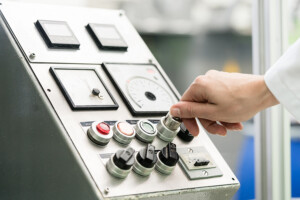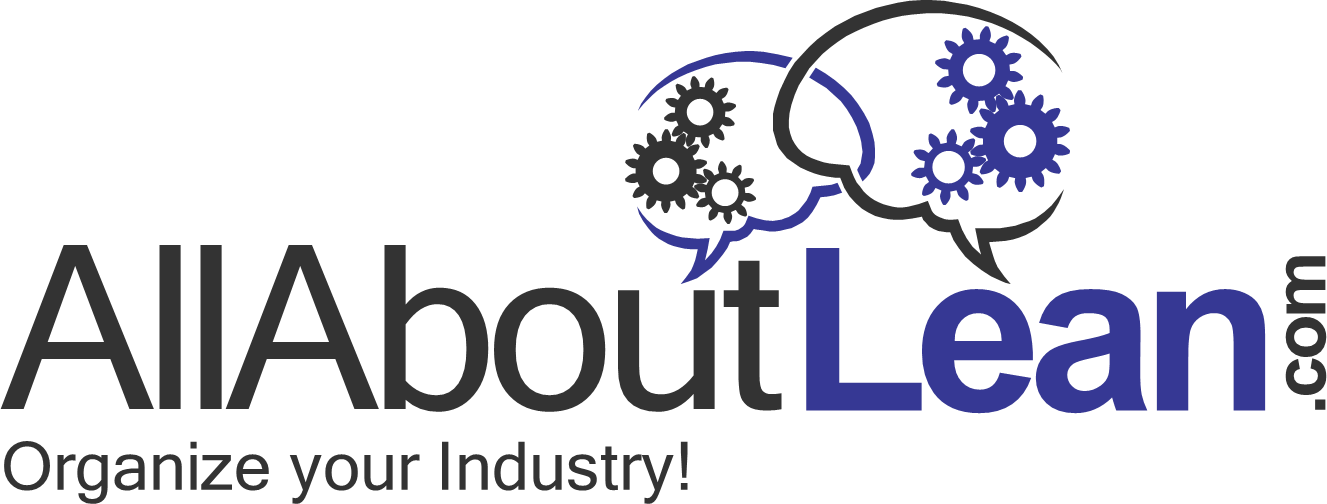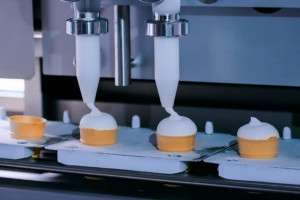 In manufacturing, a common sentiment is that the line (or generally the process) must run. There is some truth to that, but—counterintuitively—for a system to run well you need to know when to stop it too. This is my second post in a series giving you an overview on when it may be better to stop the line rather than keeping it running (and making everything worse). Keep on reading!
In manufacturing, a common sentiment is that the line (or generally the process) must run. There is some truth to that, but—counterintuitively—for a system to run well you need to know when to stop it too. This is my second post in a series giving you an overview on when it may be better to stop the line rather than keeping it running (and making everything worse). Keep on reading!
SMED
Ramp-Up and Ramp-Down of Production
 In my last post I looked at the preparations for a proper ramp-up or start of a machine or process. This post is the second part where you actually press the button and start the machine. I will also discuss the ramp-down procedures, as well as a SMED-like approach to improve the ramp down and up again process.
In my last post I looked at the preparations for a proper ramp-up or start of a machine or process. This post is the second part where you actually press the button and start the machine. I will also discuss the ramp-down procedures, as well as a SMED-like approach to improve the ramp down and up again process.
Preparation for Ramp Up and Down of Production
 Some factories work around the clock. But more commonly, factories ramp up at the beginning of the week, workday, or shift and then ramp down at the end. I often have the feeling that this is a somewhat neglected topic despite its influence on safety, quality, and efficiency. Hence I would like to take a closer look at the ramp-up and ramp-down procedures in industry, and how to optimize them. This first post will look at how to prepare a ramp-up before actually flicking the switch of the process.
Some factories work around the clock. But more commonly, factories ramp up at the beginning of the week, workday, or shift and then ramp down at the end. I often have the feeling that this is a somewhat neglected topic despite its influence on safety, quality, and efficiency. Hence I would like to take a closer look at the ramp-up and ramp-down procedures in industry, and how to optimize them. This first post will look at how to prepare a ramp-up before actually flicking the switch of the process.
SMED 2.0—A Changeover for the Changeover
 Single Minute Exchange of Die (SMED) to reduce and shorten changeover times is one of the best-known methods in lean manufacturing. However, the original steps as shown by Shingo have, in my view, potential for improvement. Hence, I restructured the changeover workshop based on my experience with SMED to make it easier and more straightforward. This rework is not groundbreaking or revolutionary, but merely a few small changes to make it easier to use. As it is popular nowadays, I also added a 2.0 after SMED for my SMED 2.0.
Single Minute Exchange of Die (SMED) to reduce and shorten changeover times is one of the best-known methods in lean manufacturing. However, the original steps as shown by Shingo have, in my view, potential for improvement. Hence, I restructured the changeover workshop based on my experience with SMED to make it easier and more straightforward. This rework is not groundbreaking or revolutionary, but merely a few small changes to make it easier to use. As it is popular nowadays, I also added a 2.0 after SMED for my SMED 2.0.
A Few More Turns on the Changeover Wheel – Part 5: Frequently Asked Questions
A Few More Turns on the Changeover Wheel – Part 4: Options for Prioritizing
A Few More Turns on the Changeover Wheel – Part 3: Prioritizing Jobs
 In my last posts I talked on how to set up a changeover wheel or, more generally, a changeover sequence. Next I will show you how to use a changeover wheel. You have to fit you prioritized production into the sequence. The idea is simple, but there are some pitfalls as well as some tricks to make it easier. I will talk more about the pitfalls in my next post. Let’s have a look on how to fill the changeover wheel with actual production jobs.
In my last posts I talked on how to set up a changeover wheel or, more generally, a changeover sequence. Next I will show you how to use a changeover wheel. You have to fit you prioritized production into the sequence. The idea is simple, but there are some pitfalls as well as some tricks to make it easier. I will talk more about the pitfalls in my next post. Let’s have a look on how to fill the changeover wheel with actual production jobs.
A Few More Turns on the Changeover Wheel – Part 2: Improving the Sequence
 In my last post I looked at how to create a changeover sequence. However, this was only the first draft of such a sequence. For a truly good sequence, you need to spend some more time optimizing the sequence. Try to get a better sequence, even though it is impossible to find the perfect solution even for a moderate number of products. I also give a suggestion on how to visualize a changeover wheel in Excel.
In my last post I looked at how to create a changeover sequence. However, this was only the first draft of such a sequence. For a truly good sequence, you need to spend some more time optimizing the sequence. Try to get a better sequence, even though it is impossible to find the perfect solution even for a moderate number of products. I also give a suggestion on how to visualize a changeover wheel in Excel.


